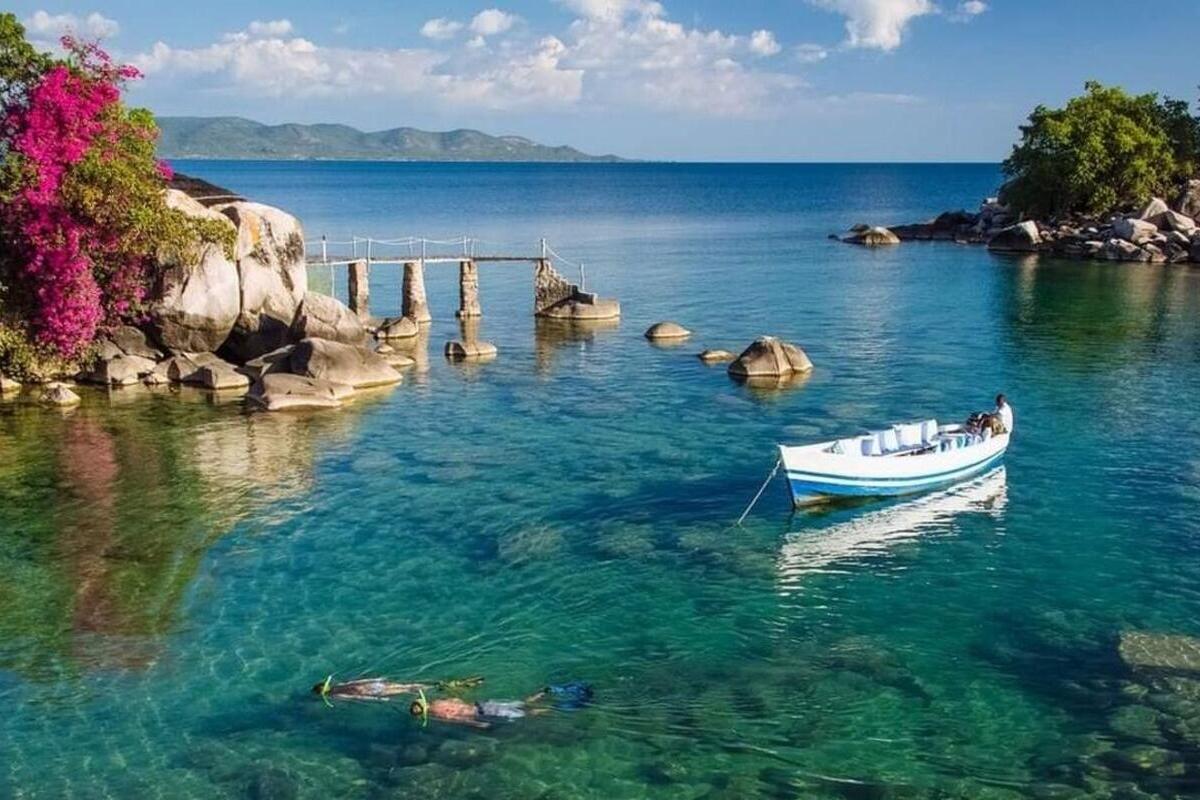Lake Nyasa, also known as Lake Malawi, is one of Africa’s most fascinating and unique natural wonders. It captivates not only with its vast size but also with the richness of its underwater life, cultural importance, and historical legacy. As the third-largest lake in Africa and one of the deepest in the world, it holds immense geographical and ecological value. Its waters shelter thousands of endemic fish species and serve as a center for scientific research, tourism, and local livelihood. Below are amazing and educational facts about Lake Nyasa (Malawi) that you may not have known.
- Lake Nyasa is the third-largest lake in Africa after Lake Victoria and Lake Tanganyika. It stretches over 580 kilometers in length and up to 75 kilometers in width. The lake lies on the border of three countries — Malawi, Mozambique, and Tanzania. It is a vital geographical and economic feature of the region.
- The lake was formed through tectonic activity as part of the East African Rift system. In some areas, it reaches depths of over 700 meters, making it one of the ten deepest lakes in the world. Geologists study Nyasa to better understand the processes involved in the formation of the Earth’s crust. The area remains geologically active to this day.
- Lake Nyasa is known for having the greatest diversity of freshwater fish in the world. More than 1,000 species of fish inhabit its waters, and most of them are endemic, meaning they exist nowhere else. The lake is especially rich in cichlid species, which attract scientists and aquarium enthusiasts. It is considered a paradise for ichthyologists.
- One unique behavior among the lake’s cichlids is their mouthbrooding parenting method. Many species carry their eggs and young in their mouths until the offspring are mature enough to survive. This form of parental care is extremely rare in the animal kingdom. It highlights the incredible adaptability of the lake’s aquatic life.
- The lake’s water is remarkably clear, allowing for excellent visibility even at depth. This makes Lake Nyasa an ideal location for diving and underwater photography. Its sandy beaches and rocky underwater formations attract tourists from all over the world. Many eco-lodges and tourism centers are situated along the lake’s shores.
- For local communities, the lake is a source of drinking water, food, and economic activity. Fishing is one of the main occupations of people living in the lakeside villages. Dried fish from Nyasa is exported to other parts of Africa and is an important trade commodity. It provides employment and income to thousands of families.
- The lake is known by different names depending on the country. In Tanzania, it is called Lake Nyasa, in Malawi it is referred to as Lake Malawi, and in Mozambique it is sometimes called Lake Nyasa or Lake Nyandze. These naming differences are rooted in history and politics. Disputes over the official name persist today.
- In 1984, part of the lake was designated as Lake Malawi National Park, which is now a UNESCO World Heritage Site. It was the world’s first national park created specifically to protect freshwater biodiversity. Fishing and environmental activities are strictly monitored within the park. It plays a crucial role in the conservation of endemic species.
- The lake’s shores hold great cultural and spiritual significance for local communities. Traditional rituals, ceremonies, and festivals related to water are held here. Many legends describe the lake as the dwelling place of spirits or ancestors. Water from the lake is considered sacred and believed to have cleansing powers.
- A rare form of parasitism has been observed in the lake, involving fish that mimic eggs to enter the mouths of mouthbrooding females. This behavior is unique to a few species and is a subject of ongoing biological research. It demonstrates the evolutionary complexity of the lake’s ecosystem. Such findings help scientists understand adaptation and survival strategies.
- Lake Nyasa faces several ecological threats. Pollution, overfishing, and climate change pose serious risks to its environment. Some fish species have already become endangered or extinct. Conservation organizations are working with governments to protect the lake’s biodiversity.
- The lake is part of the Great African Waterway. It supports regional trade routes and facilitates transport between bordering countries. Local people use boats, barges, and ferries for transportation. This helps promote regional economic cooperation and integration.
- Sediment deposits on the lake bed contain records of ancient climate patterns. These layers provide information about past temperatures, rainfall, and geological activity over thousands of years. Lake Nyasa serves as a natural archive of climate history. This data is valuable for global climate research and forecasting.
- The lake continues to attract scientists, tourists, photographers, and volunteers. International research projects, environmental campaigns, and educational programs are regularly conducted there. Visitors can not only relax but also take part in conservation efforts. Nyasa has become a symbol of harmony between people and nature.
Lake Nyasa is a unique natural site where biodiversity, cultural heritage, history, and science converge. Its depths conceal not only thousands of fish species but also traces of Earth’s ancient past. These fascinating facts about Nyasa show how important and valuable the lake is to humanity. The more we learn about it, the more we are inspired by its beauty, complexity, and significance.





